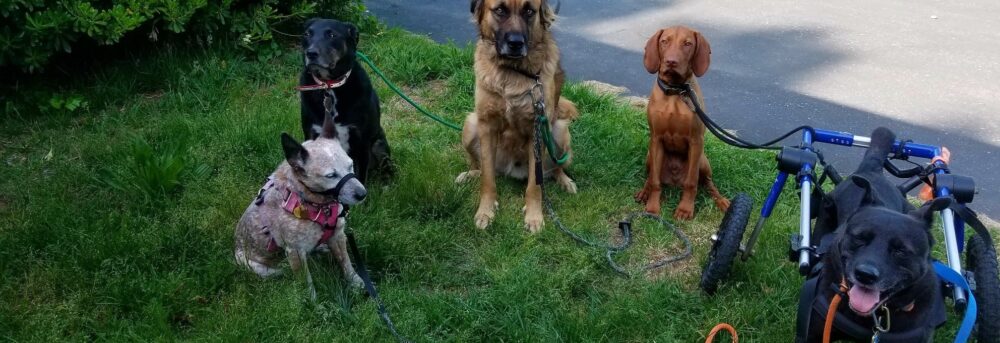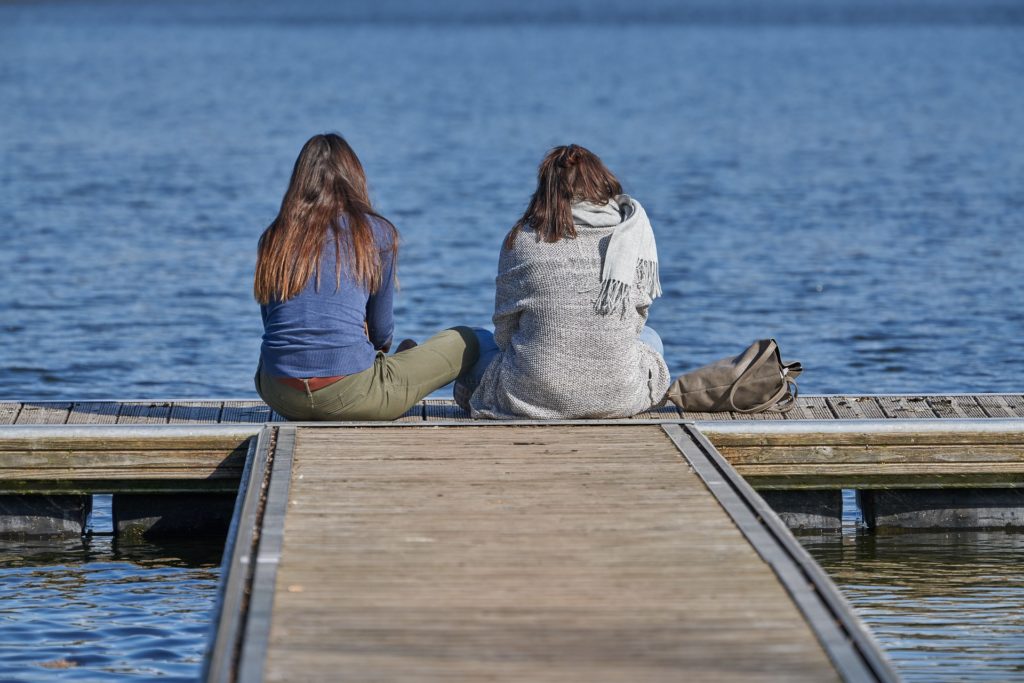Why does watching a dog be a dog fill one with happiness? Jonathan Safran Foer
The white SUV slowed as it ascended the hill, and the driver, a neighbor I didn’t know, gave me a friendly wave. Buster, our black border collie, and I scooted over to the other side of the street to get out of her way, only to realize she wanted to turn down the driveway we were now blocking.
I led Buster back across the dirt road, then tugged gently on the leash to quicken his pace as we resumed our afternoon walk. But instead of continuing on, the woman rolled down her window, looked down at my wriggly pup and said, “It makes me so happy every time I see you out walking your dog.”
Eighteen months earlier, Buster had burst a disc in his spine. By the time my daughter Molly and I got him to the emergency room at the UC Davis Veterinary Hospital, Buster had lost all feeling in the back half of his body. Although the neurosurgeon only gave him a coin flip’s chance of ever walking again, my husband Dan and I decided we had to give our beloved nine-year-old dog that possibility.
We had gotten Buster while Jimmy was away at college. He was a much-needed burst of noise and energy in a house that had grown too quiet after the death of our Labrador retriever Bronco four months earlier. When Jimmy came home a few months later, too sick and miserable from cancer treatment side effects to navigate dorm life, Buster provided both a welcome distraction and a source of comfort. Despite his Border collie energy, Buster would lie next to one of us for hours, sensing as dogs do, when we were sad or upset. He stayed with us during Jimmy’s final days, leaving the bedroom only to eat or zip outside to go to the bathroom. He was the only reason I left the house in the early months after Jimmy’s death, willing to walk for as long as it took for my tears to stop and my sadness to ease. Although the spinal surgery Buster needed was expensive, and the outcome was not guaranteed, we could neither let him down nor face the pain of losing him prematurely.
The surgery went well, but when Buster’s recovery didn’t proceed as quickly as expected, the neurosurgeon resident and the physical therapy team stopped believing he would walk again. My attempts to point out small, new movements of his tail or back legs were dismissed as involuntary reflexes. But Dawn, the dog trainer who cares for Buster when we travel, never lost faith in him. Over the objections of the lead physical therapist, she pushed me to get a wheelchair, insisting it would help him gain strength, enable him to start moving his back legs and get him back out into the world.
 During COVID, Buster and I had become a familiar sight in our neighborhood when long walks became the way I dealt with the stress and isolation of working exclusively from home. The people who live in Sterling Point, a small, rural community of about 60 homes are polite but reserved. Before his injury, when Buster and I walked the sidewalk-less streets, residents nodded if our eyes met, but rarely said much beyond a greeting or comment about the weather. Though the four-legged residents are always on leashes, I lost track of the number of times, a neighbor ventured too close to us, only to have their dog growl and lunge at Buster. As the owner wrestled the animal away, I’d hear them say, “He never does this …” as though their dog’s aggression was somehow Buster’s fault.
During COVID, Buster and I had become a familiar sight in our neighborhood when long walks became the way I dealt with the stress and isolation of working exclusively from home. The people who live in Sterling Point, a small, rural community of about 60 homes are polite but reserved. Before his injury, when Buster and I walked the sidewalk-less streets, residents nodded if our eyes met, but rarely said much beyond a greeting or comment about the weather. Though the four-legged residents are always on leashes, I lost track of the number of times, a neighbor ventured too close to us, only to have their dog growl and lunge at Buster. As the owner wrestled the animal away, I’d hear them say, “He never does this …” as though their dog’s aggression was somehow Buster’s fault.
All this changed after Buster got his wheelchair. Other dog owners started maintaining a respectful distance, pulling the leash tight and cautioning their pet to behave as we passed each other on opposite sides of the road. The owner of the scariest dog in the neighborhood acknowledged her dog’s menacing behavior and explained that she was going to keep Buster safe by turning around and going the other way.
Neighbors I had never spoken to before stopped to ask about Buster’s injury, how he liked the wheelchair, whether he’d regained control over his bowels. They praised me for not putting Buster down and being willing to care for him in this condition. With his back legs hanging limply in the stirrups, I think they assumed he wouldn’t make a full recovery. A yard maintenance worker staring at Buster from inside his pickup truck rolled down his window on afternoon and said, “God bless you” before driving off. These kind comments felt like the balm I needed during the early months of caring for our still incontinent, paralyzed pup.
As the months passed, Buster continued to improve, just as Dawn predicted. He can walk now on grass or carpet and does most of his bathroom activity outside. He looks like a tiny body builder with a powerful torso, muscular shoulders and skinny hind legs. But when we’re out in the wheelchair now, Buster moves his back legs back and forth as though he were swimming. His front legs are doing all the work, but I think he believes his hind legs are helping to propel the wheelchair forward. It makes me laugh to watch him motoring around the neighborhood.
Neighbors I haven’t yet met and those who use the trails by the lake still stop me wanting to know what happened to Buster. But unlike the early days when their attention was on me and their praise was proffered with a tone of “I couldn’t do what you’re doing,” they focus on Buster now. How happy he seems, how alert, how full of energy. They share stories about their own animals’ health challenges and the way it lifts their spirits to see my happy pup out for a walk.
When Dan, Molly and I gave the okay for Buster’s spinal surgery, we did it out of gratitude for the way Buster had helped each of us survive Jimmy’s death. His willingness to walk for hours or lay motionless in our laps while we cried. The way he stayed close, positioning himself at a central point in the house so he could keep a watchful eye on us if we were in three different rooms. We couldn’t let him down when he needed us to step up and care for him. It has been and still is a lot of work. But I’ve never regretted the decision. Even when Buster couldn’t move, it was enough to see how happy he was just to be with us.
Although I was willing to do my part to help build up his strength, early on walks with Buster in the wheelchair used to feel more like an obligation than a pleasure. I chafed at how much slower we moved, how much less ground we could cover, how often we had to stop to explain his condition to a curious neighbor. It wasn’t until the focus shifted to Buster as he got more mobile that I began to see what others did. The joy with which he prances down the street. Snout out, ears up, tail wagging vigorously from side to side. He reminds me of the mayor of a small town, offering everyone a friendly wave and warm greeting.
Buster doesn’t need words to tell everyone who sees him how much he loves being outside in motion once again. When people pause, their faces lit up in response to his whole-body eagerness to say hello, I think about the way this small pup has made our neighborhood a warmer, friendlier place. The way he’s made us slow down, look up and remember the simple joy of being seen and spoken to.





